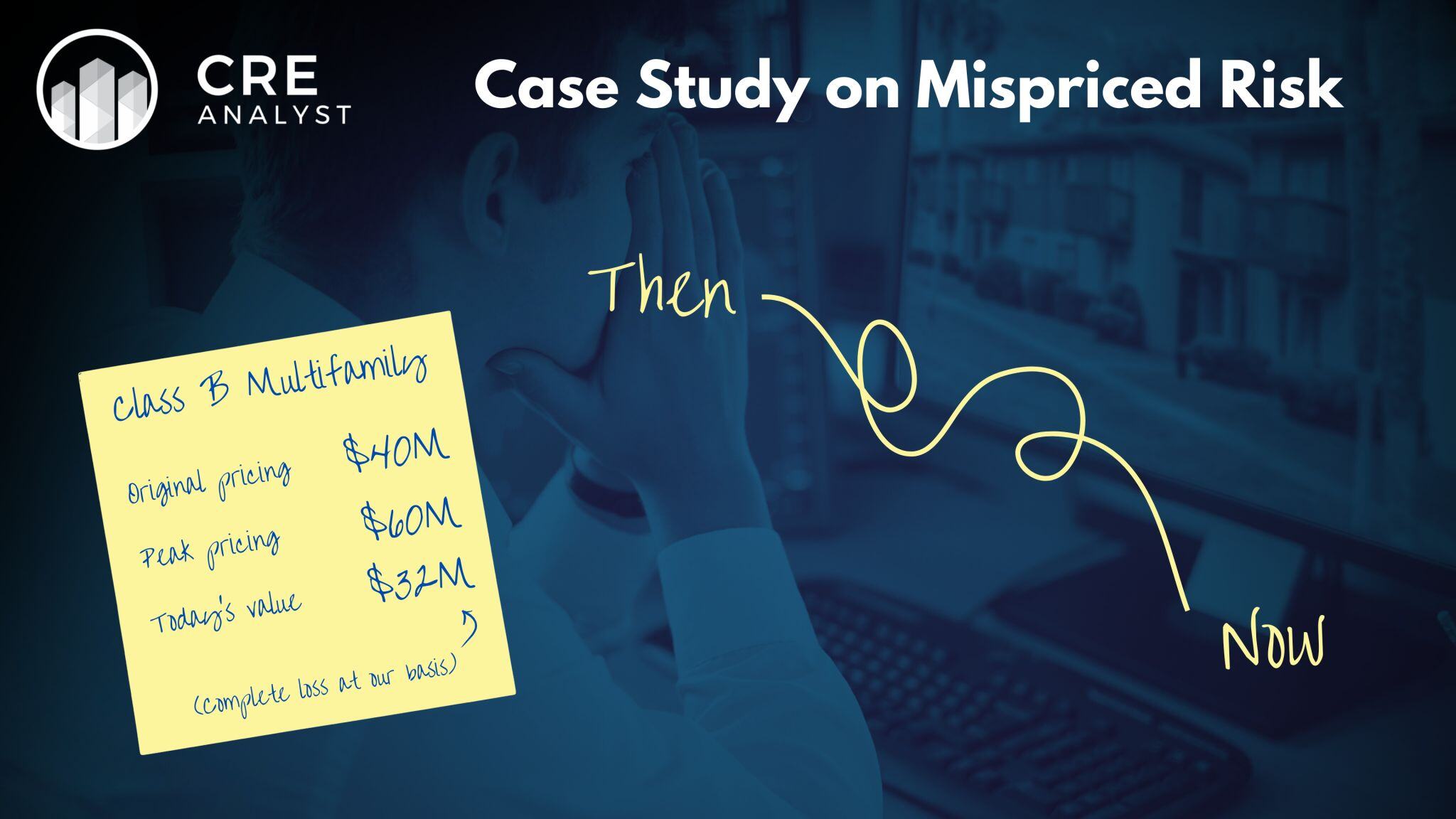
Case study: What happens when you misprice risk?
Buyers spend countless hours underwriting operating cash flow but will casually shave 100 basis points off a discount rate or cap rate.
For most of the last 30 years, this wasn’t a costly mistake.
...then that changed.
Office gets all the attention when it comes to locked up capital markets, but lower quality apartments could be experiencing a similar cycle.
Class B and C trades are non-existent, so we're left to guess about bid-ask gaps based on various underwriting assumptions.
Here's a sobering look at underwriting assumptions for a generic Class B/C asset over the 5+ years...
---- Pre-2020 ----
Rent growth: 3%
OpEx growth: 3%
Reserves: $500/unit
Going-in cap: 6%
Exit cap: 7%
Unlev IRR: 7%
Cost of debt: 4%
Levered IRR: 10%+
Implied value: $40M
For decades, B and C assets weren’t considered "core," but family offices, local investors, and individuals made solid, income-oriented returns by buying at 6-8% cap rates. Inflationary gains and mild property improvements added another 100-200 basis points, all amplified by sub-5% mortgage debt.
---- 2021-23: Fix-and-flippers ----
Rent growth: 10% from renovations
OpEx growth: 3%
Reserves: $300/unit
Going-in cap: 4%
Exit cap: 4.5%
Unlev IRR: 8%
Cost of debt: 3%
Levered IRR: 14%
Implied value: $60M
The post-pandemic market created a playbook for quick profits:
- Light renovations with big rent bumps
- Assumed tax assessments below 70%
- Minimal reserves
- High LTC floating-rate debt
- Exit before market fundamentals catch up
- For a while, it worked.
---- Today’s buyers ----
There don't seem to be many buyers of lower-quality product, so we're guessing here, but underwriting probably looks something like:
Rent growth: 0% for a few years
OpEx growth: 3%
Reserves: $1,000/unit
Going-in cap: 7.5%
Exit cap: 8%
Cost of debt: 6%
Unlev IRR: 8%
Levered IRR: 9%
Implied value: $32M
Well-capitalized buyers are back, but they’re targeting relatively new product at 4% cap rates. Very muted interest in older product due to capex, credit losses, taxes, insurance, and new supply.
Where did the fix-and-flip buyers go? If they concentrated all of their bets during the post-pandemic recovery and borrowed 65% LTV at peak prices, they’re wiped out.
---- Takeaways ----
We talk a lot in our classes about how underwriting value starts with an assessment of risk. Where does the property fall within the lifecycle of a building? Does it produce stable income or is it speculative? How does it compare to alternatives from a risk perspective?
Or as Paul Singer recently said:
“The worst trades are the trades where you misunderstand the risk. You put it into the wrong category.”
* From Nicolai Tangen’s In Good Company podcast. Although not real estate-specific, the discussion was focused on this exact topic. Worth a listen.

COMMENTS